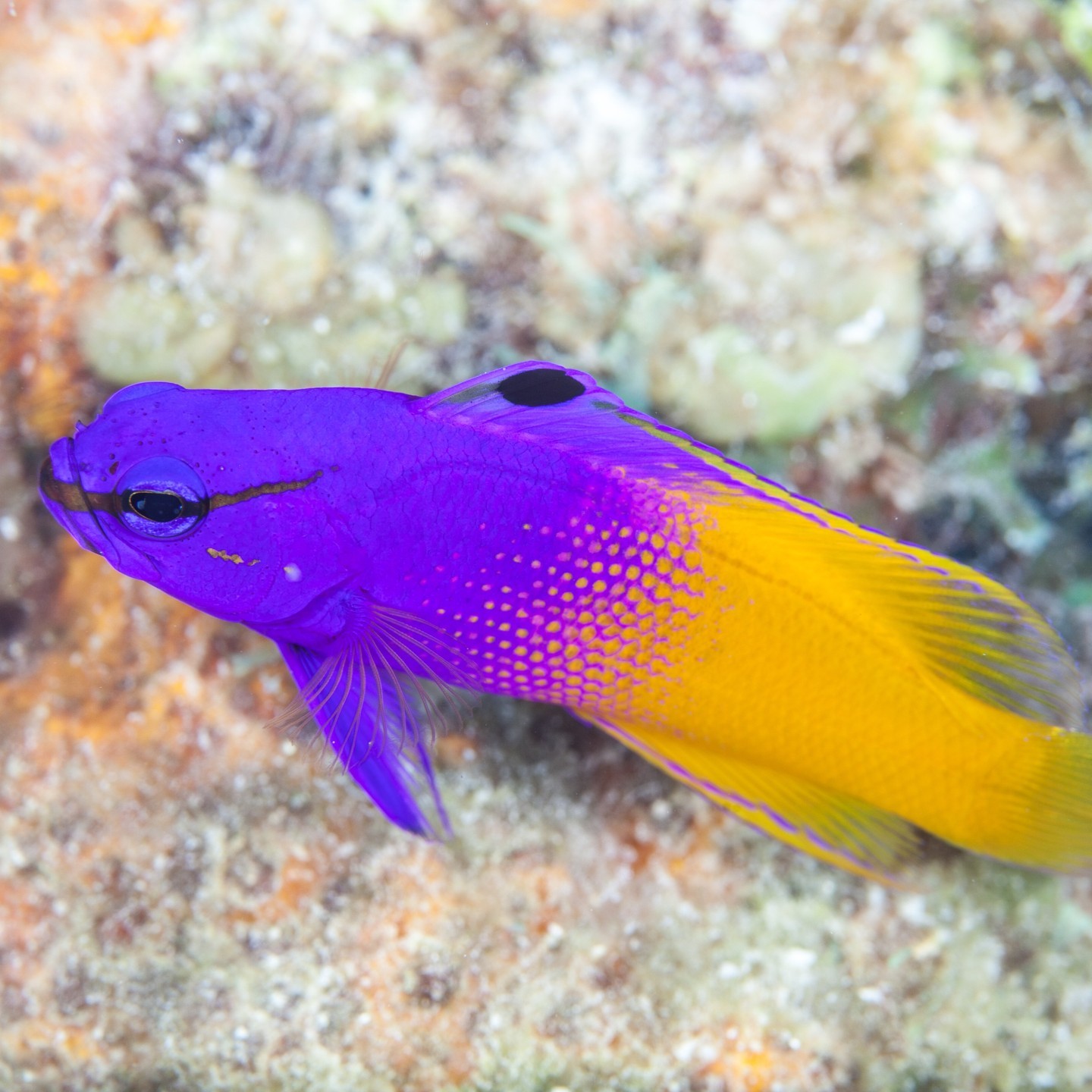- The distinct coloration and behavior of fairy basslet fish.
- The natural habitat and distribution of fairy basslet fish in tropical Atlantic environments.
- Observational insights into the alignment and movement patterns of fairy basslet fish.
- The ecological role and conservation status of fairy basslet fish in their native habitats.
- Integration of zoological studies and conservation strategies for fairy basslet fish.
The vibrant hues of the fairy basslet fish captivate the imagination of many who encounter them in their natural maritime environments or in underwater exhibits such as the USS Antiquities Cave. These striking creatures capture attention not just because of their radiant appearance but also due to their extraordinary alignment patterns in swimming. The fairy basslet fish display a fascinating gradient of color—purplish at the head that transitions seamlessly into a yellowish tone just past the midpoint of their bodies. Their colorful appearance serves both aesthetic and functional purposes, acting as both attraction and camouflage in the wild.
Native to the tropical western Atlantic Ocean and the Caribbean Sea, fairy basslets are small, yet highly adapted species that thrive in the vibrant and diverse reef ecosystems. These environments provide them with the ideal mix of shelter, food, and breeding ground necessary for their survival. Reef habitats are critical for these fish, offering protection from predators through complex structures and shadows. The global distribution of these species in warm waters underscores the importance of healthy reef ecosystems and the conservation of these environments to maintain biodiversity.
One of the most intriguing behaviors observed in fairy basslet fish is their tendency to swim parallel to surfaces, which often gives the impression they are swimming upside down. This is not an illusion of magic but a sophisticated adaptation to their habitat. By aligning themselves with the reef surfaces, fairy basslets maximize their ability to navigate through complex coral structures efficiently. This alignment may also play a role in hunting small prey by allowing the fish to maintain agility and stealth.
Their role in the ecosystem is as important as their visual charm. Fairy basslet fish serve a critical function within their environments, contributing as both predator and prey in the reef food chain. They feed on smaller planktonic organisms, maintaining a balance within these populations. In turn, they are prey for larger fish species. This interaction underscores the interconnectedness of marine ecosystems and highlights the need for conscientious conservation efforts.
Conservation of fairy basslet fish relies heavily on preserving their natural habitats. The health of coral reefs around the world is declining due to pollution, climate change, and destructive fishing practices. Therefore, initiatives that focus on protecting these ecosystems are crucial not only for the fairy basslet fish but for thousands of other marine species. This necessitates comprehensive strategies that include protecting reef environments, regulating fishing practices, and reducing carbon emissions to prevent further climate change impacts.
Zoologists and conservationists have collaborated extensively to study these beautiful fish. Research has focused on their behavioral patterns, breeding, and habitat requirements to better understand how to support their populations. Developing marine protected areas and engaging in coral restoration projects are among the efforts aimed at ensuring these vibrant creatures continue to thrive.
The study of the fairy basslet fish represents a fascinating intersection of zoology and wildlife conservation. It offers insights into how targeted conservation strategies, informed by detailed scientific studies, can preserve natural biodiversity and ensure the health of marine ecosystems. The fairy basslet fish, with its unique adaptations and pivotal ecological role, serves as a symbol of the intricate beauty of marine life and the importance of conserving these ecosystems for future generations.
Through understanding the life and environment of fairy basslet fish, researchers and enthusiasts alike gain a greater appreciation of marine biodiversity and the importance of conservation work. These insights are critical for fostering a culture of environmental responsibility and stewardship that extends beyond the ocean and into broader ecological and conservation efforts worldwide.
*****
Source Description
Bibbidi-Bobbidi-Boo! Have you spotted our fairy basslet fish in the USS Antiquities Cave? These striking creatures are brightly colored, displaying a purplish tone from their heads that changes into a yellowish tone at about the midpoint of their bodies to the end of their tails. Native to reef environments of the tropical western Atlantic Ocean and throughout the Caribbean Sea, fairy basslets have been observed to look as if they are swimming or resting upside-down. No, not because of fairy magic. Fairy basslet fish tend to align themselves parallel to the surface along which they are swimming.


